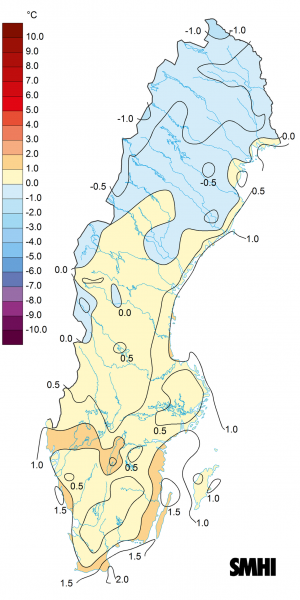 Våren är sen i år. Nu i maj är det fortfarande mycket mer snö kvar än det har varit på åratal vid den här tiden på året. Den här observationen stödjs av det faktum att medeltemperaturen i april faktiskt var något kallare än normalt i Älvsbytrakten enligt SMHI (figuren ovan visar medeltemperaturens avvikelse från det normala). Mot förväntan gick inte Piteälven innan valborgsmässoafton i år, men tack vare ett par varma vårdagar den senaste veckan har älven gått vid Älvsbyn. Vid Storforsen håller isen på att gå både i Piteälven och i Varjisån (se videon nedan), som går ihop med Piteälven strax nedanför forsen.
Våren är sen i år. Nu i maj är det fortfarande mycket mer snö kvar än det har varit på åratal vid den här tiden på året. Den här observationen stödjs av det faktum att medeltemperaturen i april faktiskt var något kallare än normalt i Älvsbytrakten enligt SMHI (figuren ovan visar medeltemperaturens avvikelse från det normala). Mot förväntan gick inte Piteälven innan valborgsmässoafton i år, men tack vare ett par varma vårdagar den senaste veckan har älven gått vid Älvsbyn. Vid Storforsen håller isen på att gå både i Piteälven och i Varjisån (se videon nedan), som går ihop med Piteälven strax nedanför forsen.
Spring has been slow to arrive this year. Now in early May it is still far more snow left than it has been for years at this time of year. This observation is confirmed by the fact that the mean temperature in April actually was slightly colder than normal in the Älvsbyn region according to the Swedish Meteorological and Hydrological Institute (SMHI) (the figure above shows the deviation of the mean temperature from normal). Contrary to my expectation Pite River did not break before Walpurgis Night this year but thanks to a couple of warm spring days this last week the river has now broken at Älvsbyn. At Storforsen the ice is breaking up both in Pite River and in the small Varjis stream (see video below) which join Pite River just below the rapid.
Själva rönnen har fortfarande inte förändrats sedan sist. Ännu har knopparna inte börjat spricka. Däremot har området förändrats. Nu har rönnen helt tinat fram ur snön. Nederdelen av stammarna är täckta av mossa. På marken ligger resterna av förra årets löv kvar.
The rowan tree itself still has not changed since last time. Bud burst has not started yet. But the area around the tree has changed. Now all the snow around the rowan is gone. The lower part of the stems are covered in moss. On the ground last year’s leaves still remain.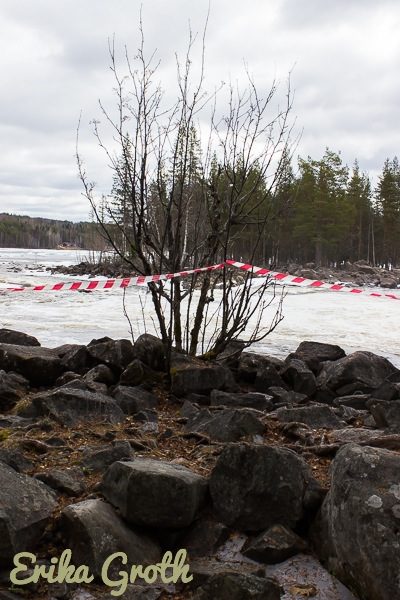
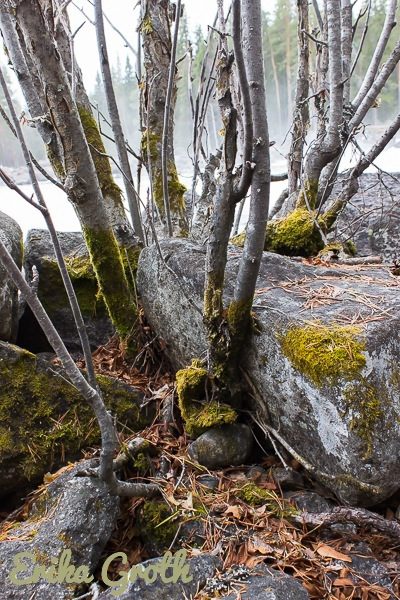
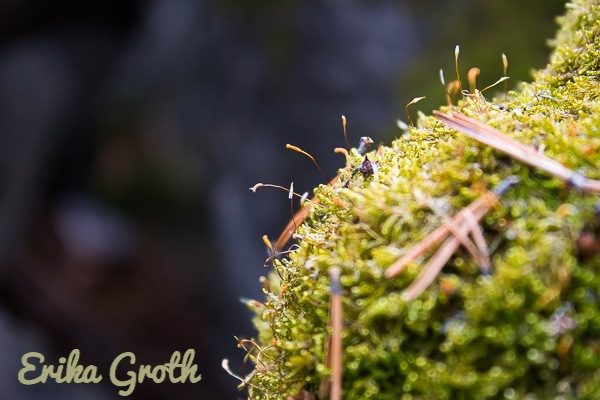
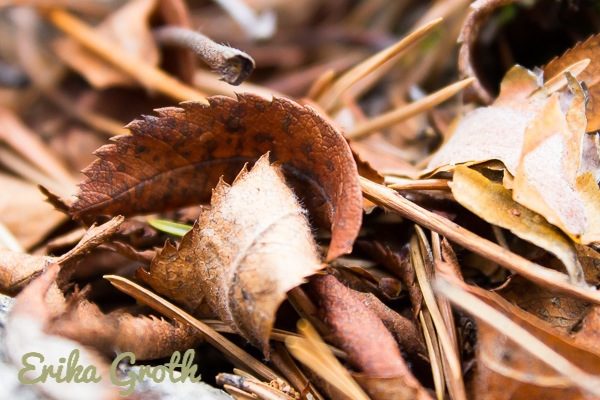 Den här gången hade nästan all snö och is på stigen längs Storforsen smält bort och jag kunde för första gången i år gå (utan att riskera livet) längs forsen hela vägen upp till huvudutsiktspunkten. Där uppe passade jag på att fotografera lite mer färgglada botaniska inslag. Vid den övre entrén till naturreservatet finns en stor karta över Piteälven som förklarar hur älvsystemet ser ut och var längs älven Storforsen ligger.
Den här gången hade nästan all snö och is på stigen längs Storforsen smält bort och jag kunde för första gången i år gå (utan att riskera livet) längs forsen hela vägen upp till huvudutsiktspunkten. Där uppe passade jag på att fotografera lite mer färgglada botaniska inslag. Vid den övre entrén till naturreservatet finns en stor karta över Piteälven som förklarar hur älvsystemet ser ut och var längs älven Storforsen ligger.
This time almost all the snow and ice on the path along Storforsen had melted and for the first time this year I could walk (without risking my life) along the rapid all the way up to the main lookout point. Up there I took the chance to photograph some more colourful botanical features. By the upper entrance to the natural reserve there is a big map of Pite River that explains what the river system looks like and where along the river Storforsen is located.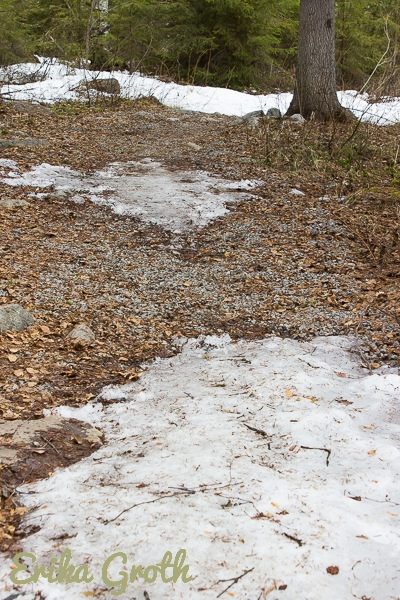
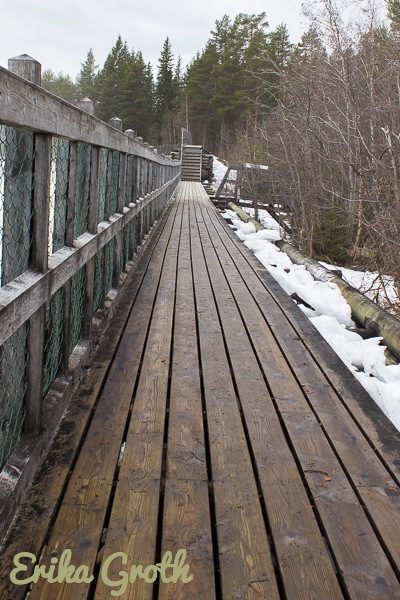
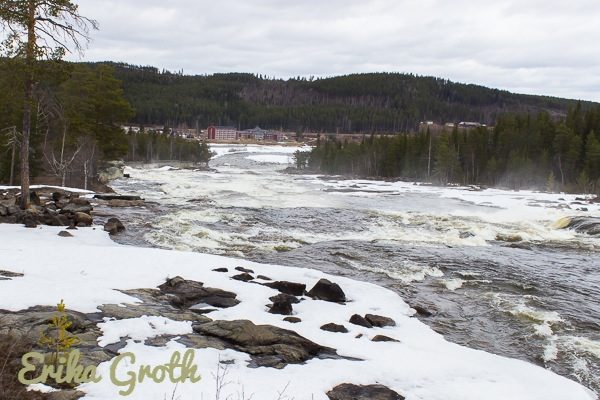
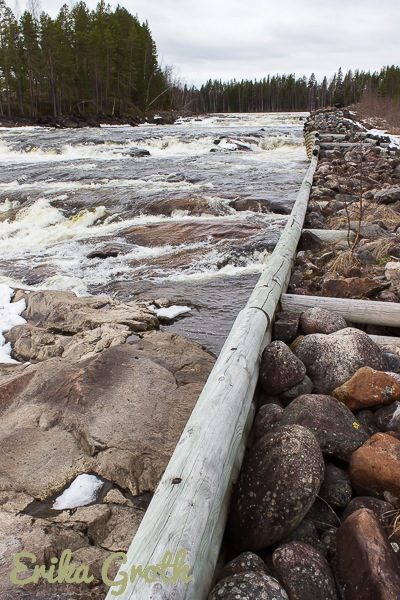
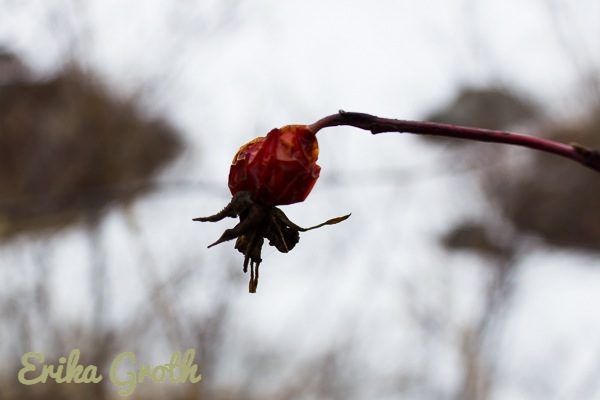
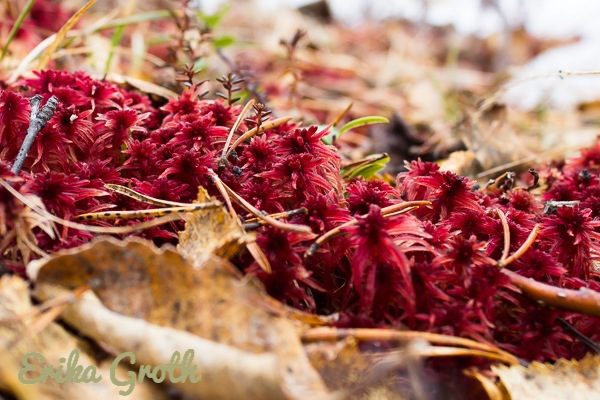
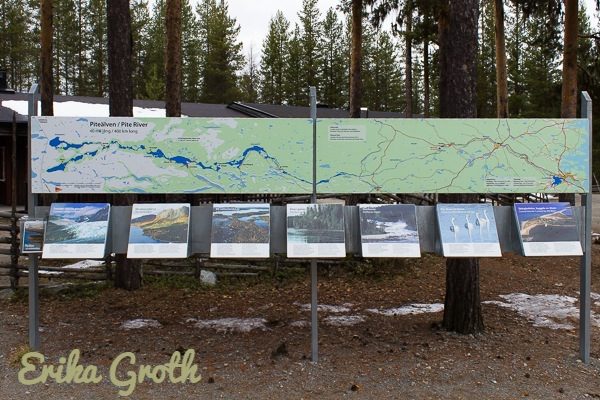
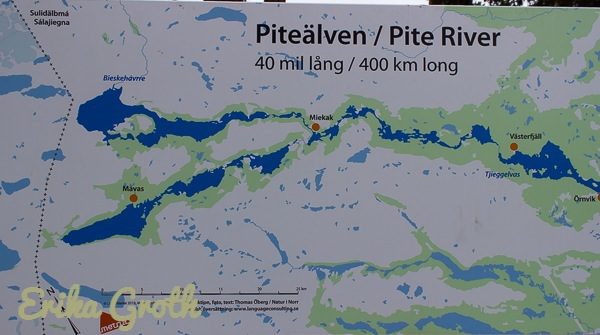
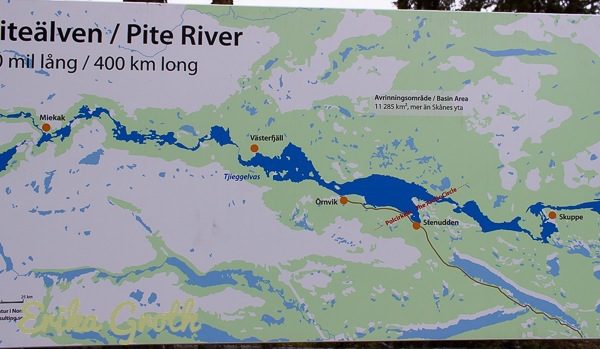
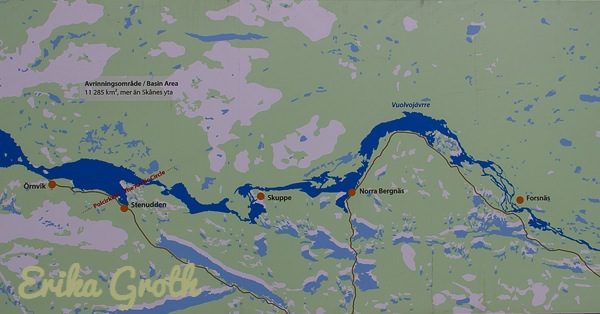
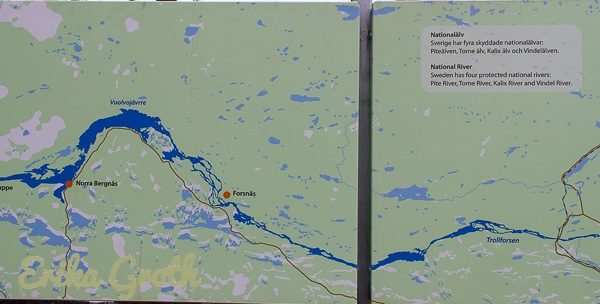
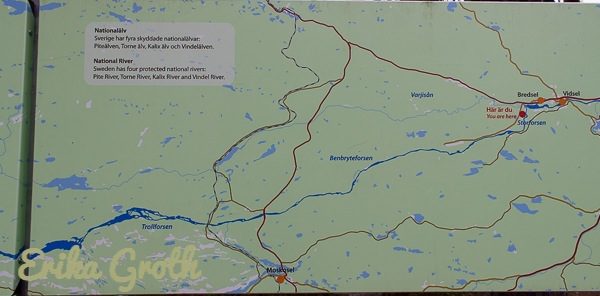
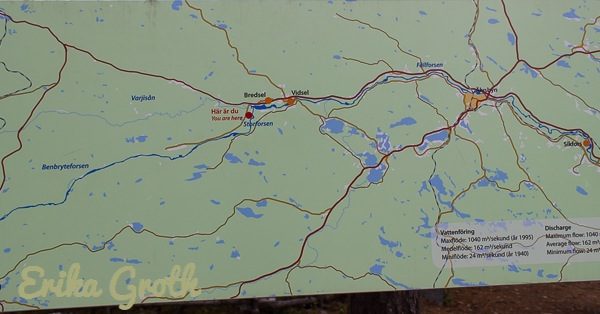
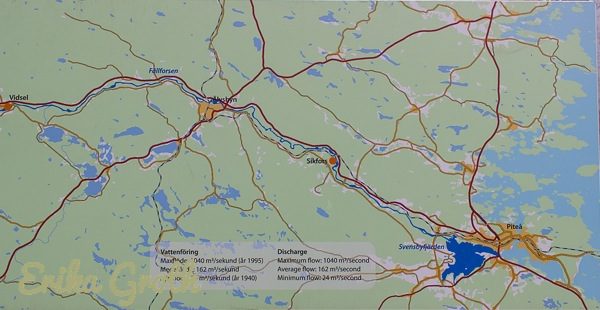 Piteälven startar uppe i Sulidälbmáfjället i Sàlajiegnaglaciären och slingrar sig 40 mil ner till Svensbyfjärden vid Öjebyn, Piteås gammelstad. På grund av landhöjningen (för närvarande cirka 1 meter varje århundrade här) flyttas hela tiden kusten allt längre ut. Under den senaste istiden pressade den gigantiska inlandsisens tyngd ner marken och marken håller nu sakta på att åter stiga tillbaka till sin ursprungliga nivå.
Piteälven startar uppe i Sulidälbmáfjället i Sàlajiegnaglaciären och slingrar sig 40 mil ner till Svensbyfjärden vid Öjebyn, Piteås gammelstad. På grund av landhöjningen (för närvarande cirka 1 meter varje århundrade här) flyttas hela tiden kusten allt längre ut. Under den senaste istiden pressade den gigantiska inlandsisens tyngd ner marken och marken håller nu sakta på att åter stiga tillbaka till sin ursprungliga nivå.
Pite River starts up in the Sulidälbmá mountain at Sàlajiegna glacier and meanders 400 kilometers down to Svensbyfjärden at Öjebyn, Piteå Old Town. Due to land rise (currently about 1 metre every 100 years here) the coast line is constantly moving further out. During the last ice age the weight of the gigantic inland ice sheet compressed the land and now the land is now slowly rising back to its original level.
Snösmältningen här i låglanden ökar sakta vattenföringen i Piteälven men det är inte förrän snön smälter uppe i fjällen i mitten till slutet av juni som vattenföringen är som störst i Storforsen med cirka 850 kubikmeter i sekunden. Storforsen är fin nu också men då är den mäktig på riktigt.
The melting snow here in the lowlands is slowly increasing the water flow in Pite River but it is not until the snow in the mountains up north melts in mid to late June that the water flow peaks in Storforsen at about 850 cubic metres of water per second. Storforsen is nice now too but that is when it is actually impressive.
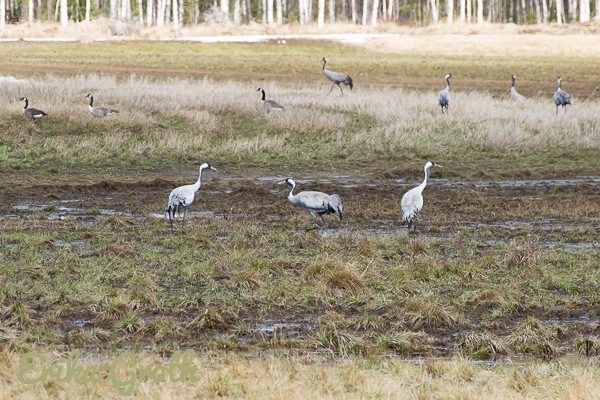
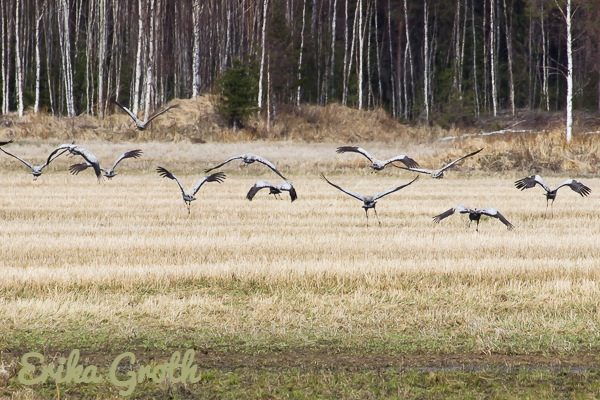
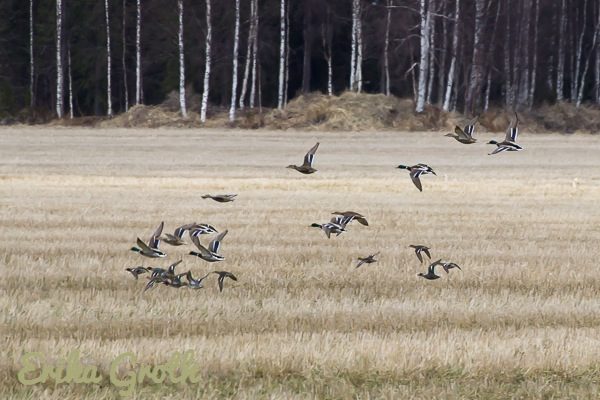
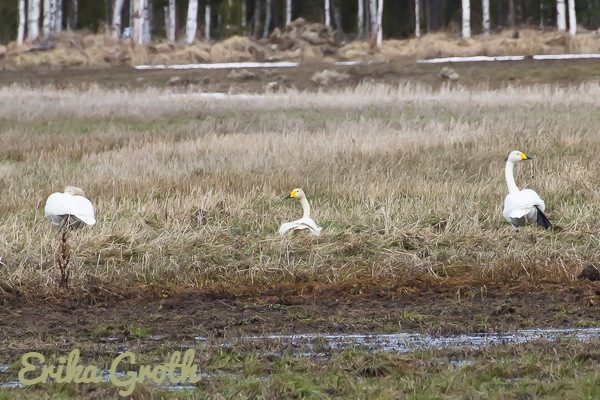 Nu återvänder flyttfåglarna. Ett fält nära Tväråselet på vägen mot Storforsen är en populär rastplats. Den här dagen såg jag tranor, sångsvanar, kanadagäss och gräsänder där. Och en rovfågel med kluven stjärt som verkade se ut som en röd glada eller möjligen en brun glada, vilket är förvirrande eftersom ingen av de två arterna borde finnas här. Vet inte riktigt vad det var.
Nu återvänder flyttfåglarna. Ett fält nära Tväråselet på vägen mot Storforsen är en populär rastplats. Den här dagen såg jag tranor, sångsvanar, kanadagäss och gräsänder där. Och en rovfågel med kluven stjärt som verkade se ut som en röd glada eller möjligen en brun glada, vilket är förvirrande eftersom ingen av de två arterna borde finnas här. Vet inte riktigt vad det var.
Now the birds that move down south for the winter are returning. A field by Tväråselet along the road to Storforsen is a popular resting site. On this day I saw Common Cranes (Grus grus), Whooper Swans (Cygnus cygnus), Canada Geese (Branta canadensis) and Mallards (Anas platyrhynchos) there. And a raptor with a forked tail that seemed to look like a Red Kite (Milvus milvus) or possibly a Black Kite (Milvus migrans), which is confusing because neither species is supposed to exist here. Don’t quite know what that was.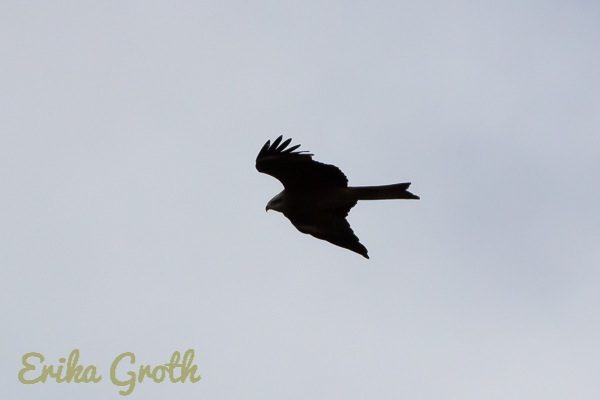
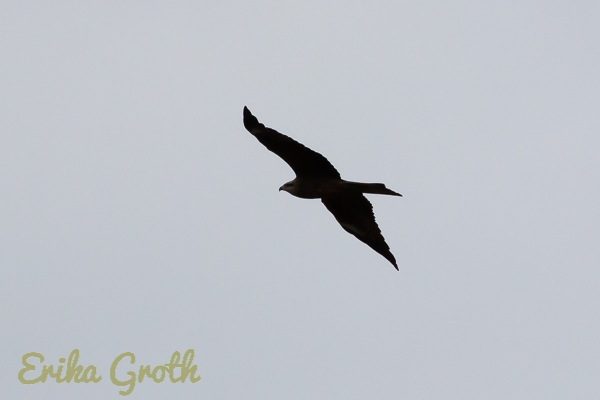 Uppljusade bilder av rovfågeln / Brightened photos of the raptor:
Uppljusade bilder av rovfågeln / Brightened photos of the raptor: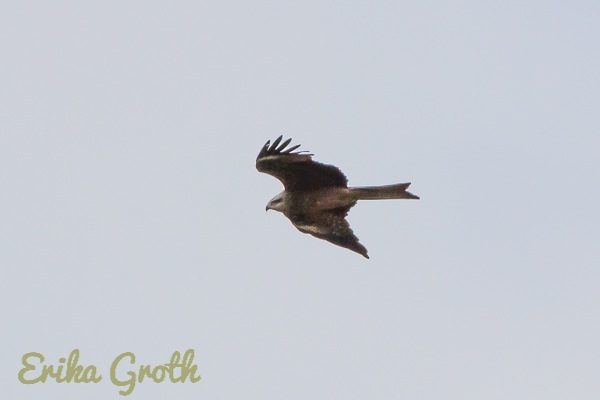
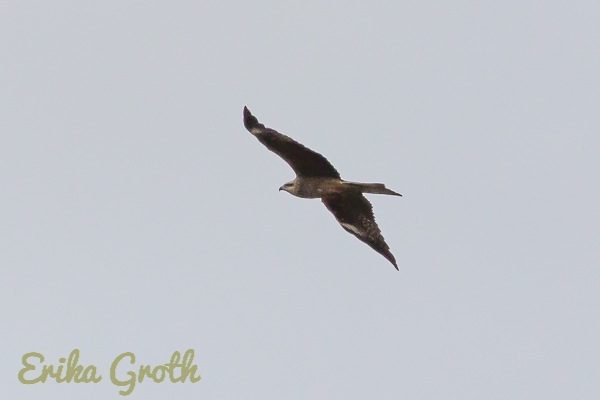 Fotona är tagna 2017-05-06 i Storforsen, Bredsel, och längs väg 374 vid Tväråselet.
Fotona är tagna 2017-05-06 i Storforsen, Bredsel, och längs väg 374 vid Tväråselet.
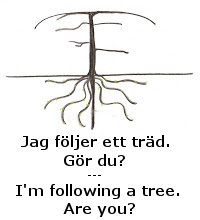 Kolla även in andra trädföljare på The Squirrelbasket (internationellt).
Kolla även in andra trädföljare på The Squirrelbasket (internationellt).

your tree is growing in a far harsher terrain than mine, I love all the wonderful photos of the wildlife, especially the one of the Cranes taking flight, Whooper swans stop off on the isle of Lewis twice a year on their way to and from Iceland and I see some of the mosses are the same/similar to those here, the river is long and has some quite wide areas to it,
Such an interesting post. I really enjoy seeing ”new” (to me) landscapes and life. Are the red plants mosses? The cranes are beautiful.
Thank you.
Yeah, they are mosses, but I’m not sure which kind of moss.
Excellent images! Especially the moss and the red ”stuff” among the dead leaves.
That’s a very long river…
You have some wonderful birds there, too. At first glance I would think the kite is a black kite, but I could be wrong. We have many red kites here in Wales but your image seems to be of a bird that is a slightly different shape and not as brightly coloured underneath. The fork looks less deep and they say the black kite has six ”fingers” while the red has only five.
I also love the way you refer to Walpurgis night – here we forget the eve and only really mention ”May Day” itself.
Thanks so much for your update
As a general rule Swedes always celebrate all holidays on the eve and not on the day altough it’s the day that technically is the holiday, like Christmas eve, Easter eve (Holy Saturday) and Midsummer eve.
Walpurgis Night in Sweden is kind of a celebration of the arrival of spring that usually involve bonfires and choirs singing spring songs. The exception to this rule is the old university town Uppsala where I lived for many years and where Walpurgis Night is one of the biggest student festivals in Europe with all kinds of strange student rituals where tens of thousands of people mostly get really, really drunk.
Walpurgis Night normal style with the most classical of all Walpurgis songs ”Längtan till landet” or more commonly known as ”Vintern rasat”:
Walpurgis Night Uppsala style:
May 1st is Labour Day in Sweden which is a work free day to ensure that everyone can walk in demonstrations in the streets. But few people actually take part in the demonstrations these days.